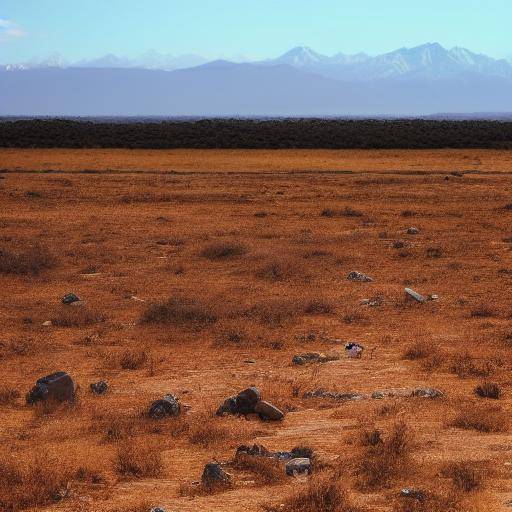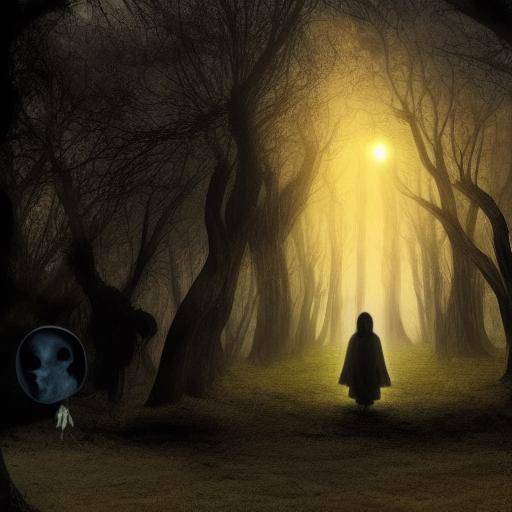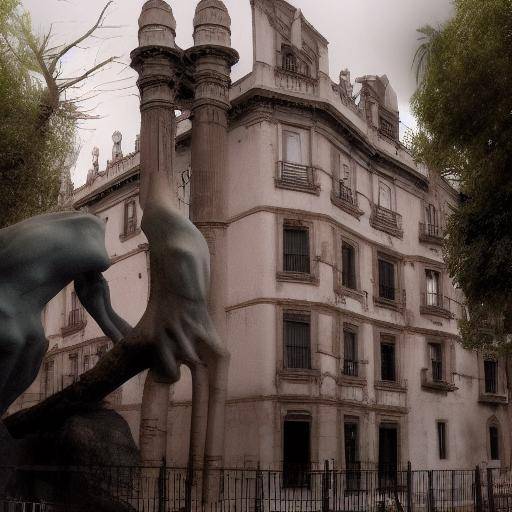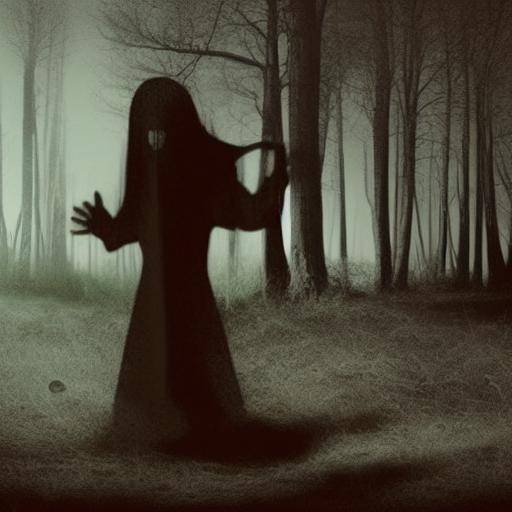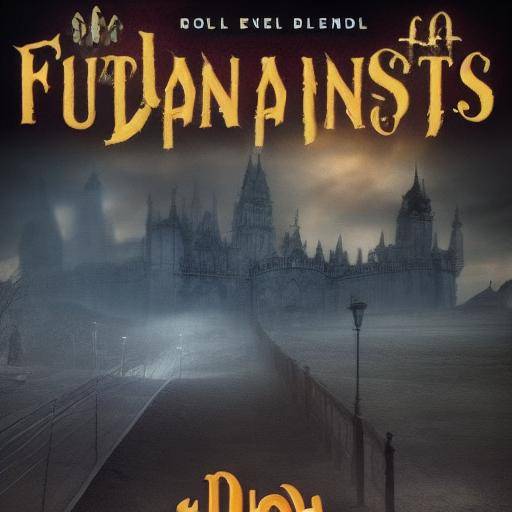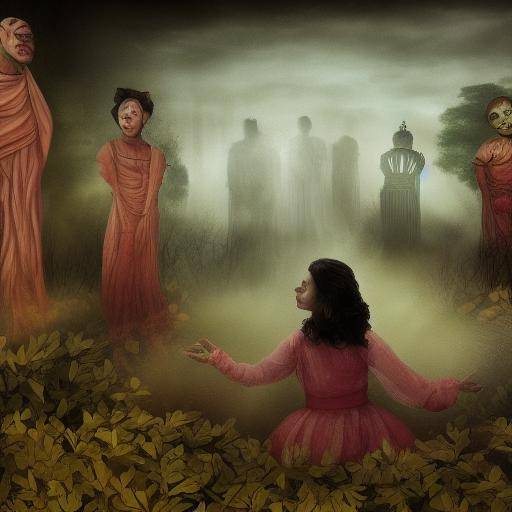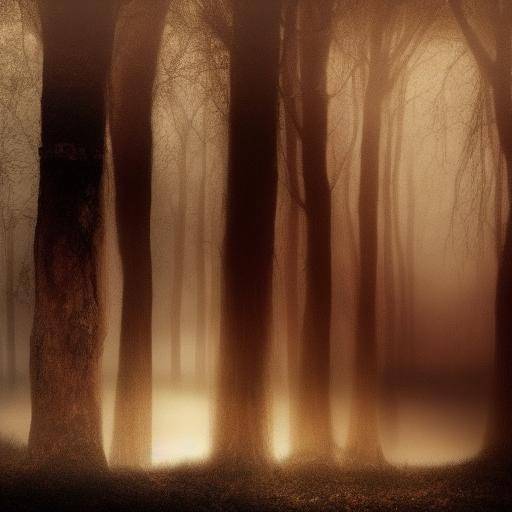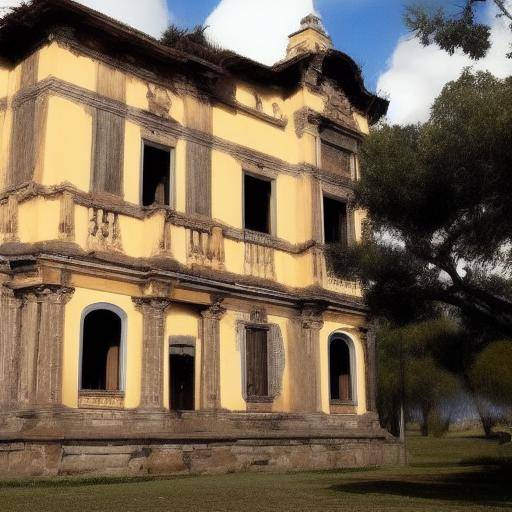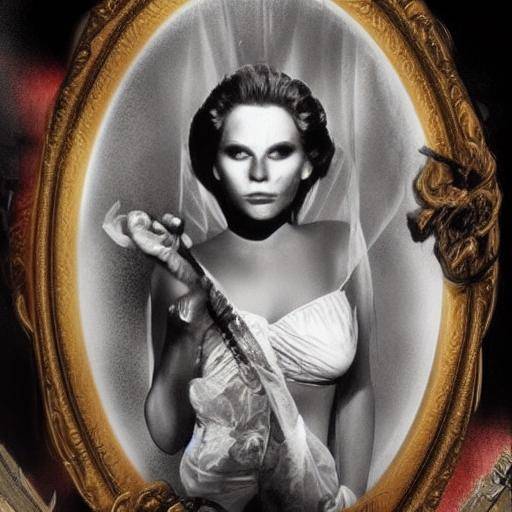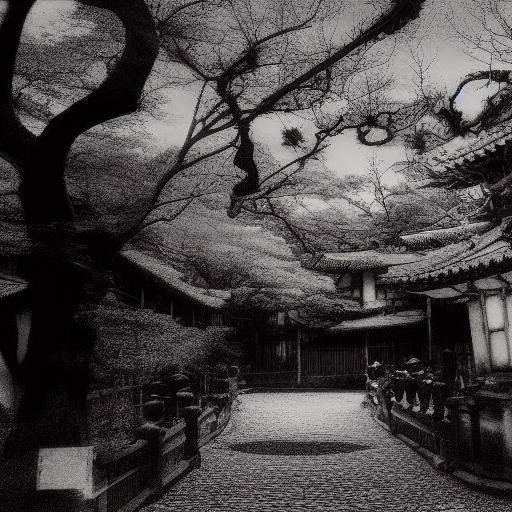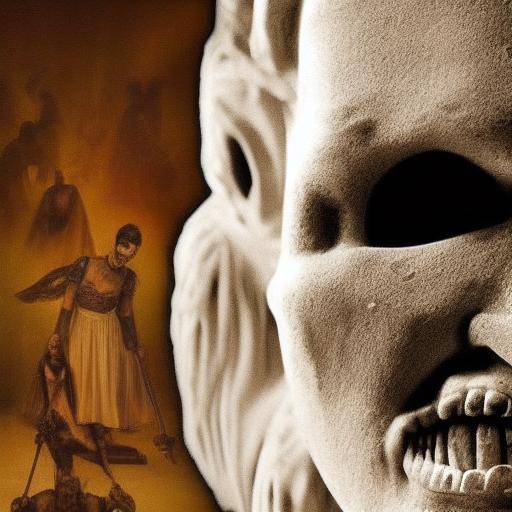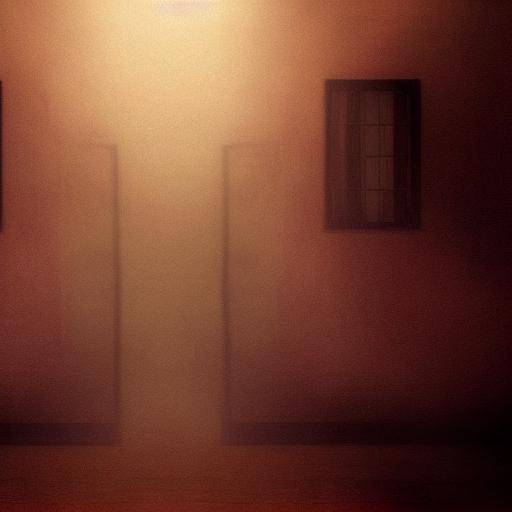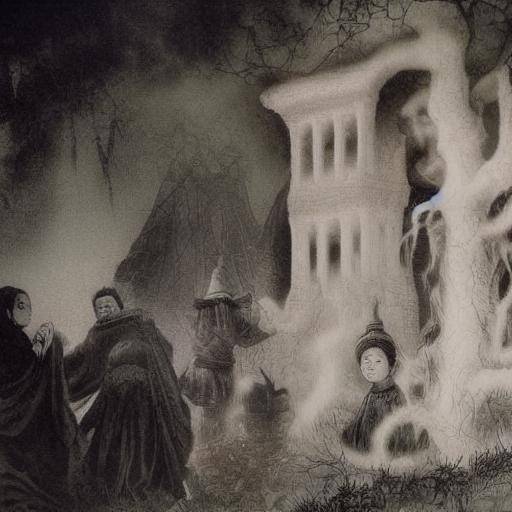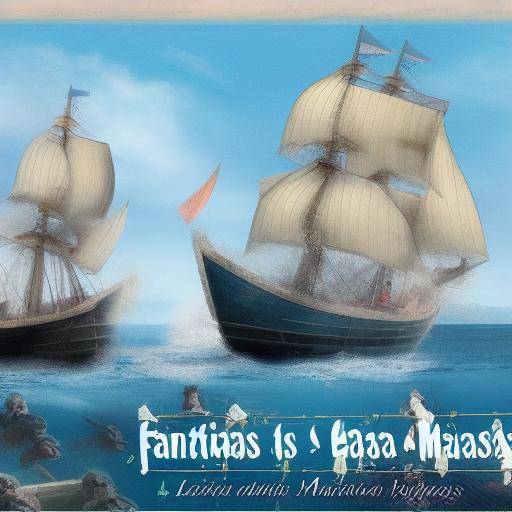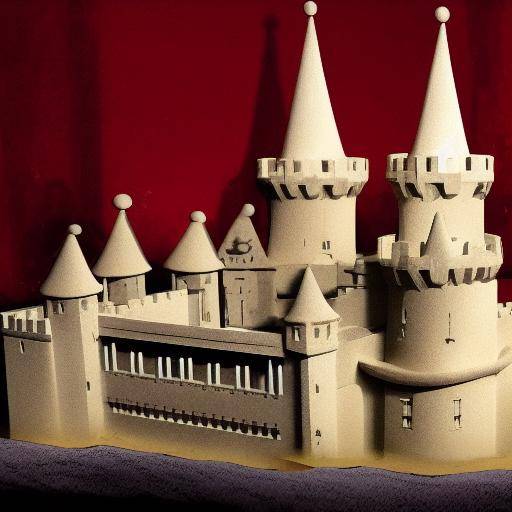
Introduction
Horror cinema has been a fascinating genre that has captivated audiences for decades. Fear films have the ability to transport us to supernatural worlds, where inexplicable ghosts and presences cause intense and chilling emotions. In this article, we will explore the presence of ghosts in the cinema, the films that have left their mark on this genre and what makes them so terrifying. From iconic classics to more recent productions, we will discover the evolution of terror on the big screen and how these films have succeeded in challenging and marking entire generations.
History and Background
The genre of horror films has a fascinating lineage that dates back to the first cinematographic projections. The projections of shadows in the nineteenth century marked the beginning of the visual representation of horror. However, it was in the 1920s when horror films began to consolidate as a distinctive genre. "Nosferatu" (1922), directed by F.W. Murnau, was one of the first films to introduce elements of supernatural terror, including the iconic representation of a vampire.
Later, the so-called "Golden Age" of horror cinema during the 1930s saw the appearance of classic monsters such as Dracula, Frankenstein and the Wolf Man, whose shocking and atmospheric representations fascinated the audiences of the time.
Over the years, horror cinema has evolved, adapting to contemporary fears and incorporating elements of psychological suspense, supernatural terror and gore horror. The influence of innovative directors such as Alfred Hitchcock, John Carpenter, Wes Craven and Guillermo del Toro has led the genre to new levels of artistic expression.
Analysis in Deep
Horror cinema has proven to be a fertile ground to explore social, personal and existential concerns. Through fear films, filmmakers have addressed issues such as anxiety, impotence, mortality and the unknown. In addition, the genre has served as a platform to challenge narrative and visual conventions, giving the filmmakers the opportunity to experiment with disturbing atmospheres, non-linear narratives and shocking visual effects.
The rise of supernatural films has led to a growing exploration of the figure of the ghost in cinema. Ghosts, as disturbing and enigmatic entities, have been used to represent traumatic losses, unresolved remorse and the persistence of the supernatural in everyday life. emblematic examples such as "The Sixth Sense" (1999) and "The Others" (2001) highlight how ghosts can be used as catalysts to explore the emotional and psychological complexities of the characters.
Comprehensive review
Fear films have proved to be an inexhaustible source of inspiration for the filmmakers, generating very successful franchises and expanding the scope of the genre. The arrival of new technologies, such as cutting-edge special effects and surround sound techniques, has led ghost representations to increasingly shocking and realistic levels. In addition, the cinema of terror has found in the international market a fertile ground for reaching global audiences of terrifying experiences.
Comparative analysis
The figure of the ghost in horror cinema has been used in various ways in different cultural contexts. While in some films the ghost presents itself as an evil and vengeful figure, in others its tragic and tearful nature is explored. The representation of the ghost in cinema varies according to cultural traditions, beliefs and fears rooted in different societies.
Practical Tips and Accessible Tips
If you are a lover of horror cinema, here we leave you some tips to enjoy these films to the fullest:
- Lighting: Watching horror movies in the dark can maximize the experience of fear. However, it is important to make sure you feel safe and comfortable.
- Music: Music and sound effects are fundamental in horror films to create tense and chilling atmospheres.
- Narrative: Pay attention to the construction of the narrative and how the tension develops throughout the film. Many films of this genre use suspense and anticipation to generate fear.
- Exploration: Do not limit yourself to classic horror movies. There is a wide variety of subgeners, from psychological terror to supernatural terror, offering different approaches and experiences.
- Reflection: After watching a movie of fear, take a time to reflect on the emotions you experienced and the themes that the film addressed.
Ideas and Industry Reviews
At present, horror films continue to be a vital part of the cinematographic panorama, attracting avid audiences to be shaken and excited. With the rise of streaming platforms, access to a wide range of horror films has increased, allowing new voices and perspectives to find place in this exciting film genre.
Case Studies and Practical Applications
A film that has left an imprint in horror cinema is "El Conjuro" (2013), directed by James Wan. This film, based on real facts, triggered a successful franchise that explores terrifying stories derived from the archives of paranormal researchers Ed and Lorraine Warren. The film has not only been highlighted by its ability to generate fear, but also by its focus on the development of complex characters and family relationships, which distinguishes it within the genre.
Future Trends and Predictions
As time goes on, we are likely to see greater diversification in the representations of ghosts and the genre of terror in general, with the inclusion of more varied cultural and narrative perspectives. In addition, the integration of new technologies, such as virtual reality and augmented reality, promises to provide even more immersive experiences in horror cinema, bringing the sense of outstandingness to unprecedented levels.
Conclusion
The horror cinema, with its disturbing representations of ghosts, continues to intrigue and captivate audiences from around the world. From their humble beginnings to the contemporary era, horror films have explored the mysteries of the beyond, the depths of the human psyche and the terrors that lurk in the darkness. They have become a place of reflection on our deepest fears and, at the same time, an inexhaustible source of intense emotions.
Frequently asked questions
1. What is the most iconic ghost movie of all time?
The most iconic ghost film is "The Sentry Sixth" (1999), directed by M. Night Shyamalan. This film left an indelible mark on popular culture due to its surprising narrative twist and touching representations of ghosts.
2. Are there significant differences between U.S. horror cinema and Asian horror cinema in terms of ghost representations?
Yes, there are significant differences between the two. While U.S. horror cinema tends to focus on the direct visual manifestation of ghosts, Asian horror cinema often resorts to a more subtle and sometimes more psychological narrative in its ghost representations.
3. What is the role of sound in creating terrifying atmospheres in horror cinema?
Sound plays a key role in horror cinema. Carefully designed sound effects can increase the sensation of fear, tension and anticipation in scenes, which contributes significantly to the terrifying atmosphere of horror films.
4. What is the impact of ghost films on contemporary popular culture?
Ghost films have left an indelible mark on contemporary popular culture, influencing literature, art, video games and music. The representation of ghosts as enigmatic and disturbing figures has permeated various aspects of society, becoming a source of inspiration for the exploration of the supernatural and the unknown.
5. What is the predominant approach in ghost films: fear or emotional and psychological reflection?
Ghost films often combine elements of emotional and psychological fear and reflection. Although they seek to generate intense emotions in the audience, they also explore deeper issues, such as loss, forgiveness and emotional legacy, using the presence of ghosts as a means to address these issues.
6. What are some of the common myths related to ghosts that have influenced cinematic representation?
The cinematographic representation of ghosts has been influenced by numerous popular myths and legends, such as the concept of vengeful ghosts, tormented souls and the persistence of life after death. These myths have contributed to the diversity of representations of ghosts in cinema, adding layers of complexity to their characterizations.
In conclusion, ghost films have taken a prominent place in horror cinema, providing exciting and provocative experiences over the years. From its first representations to contemporary innovations, gender has demonstrated its ability to satisfy our deepest fears and to stir up deep reflections on the supernatural, the unknown and the inexplicable. With a cinematic legacy rich in unforgettable stories, ghost films continue to delight and shake audiences, betting to continue exploring the limits of the paranormal on the big screen.


